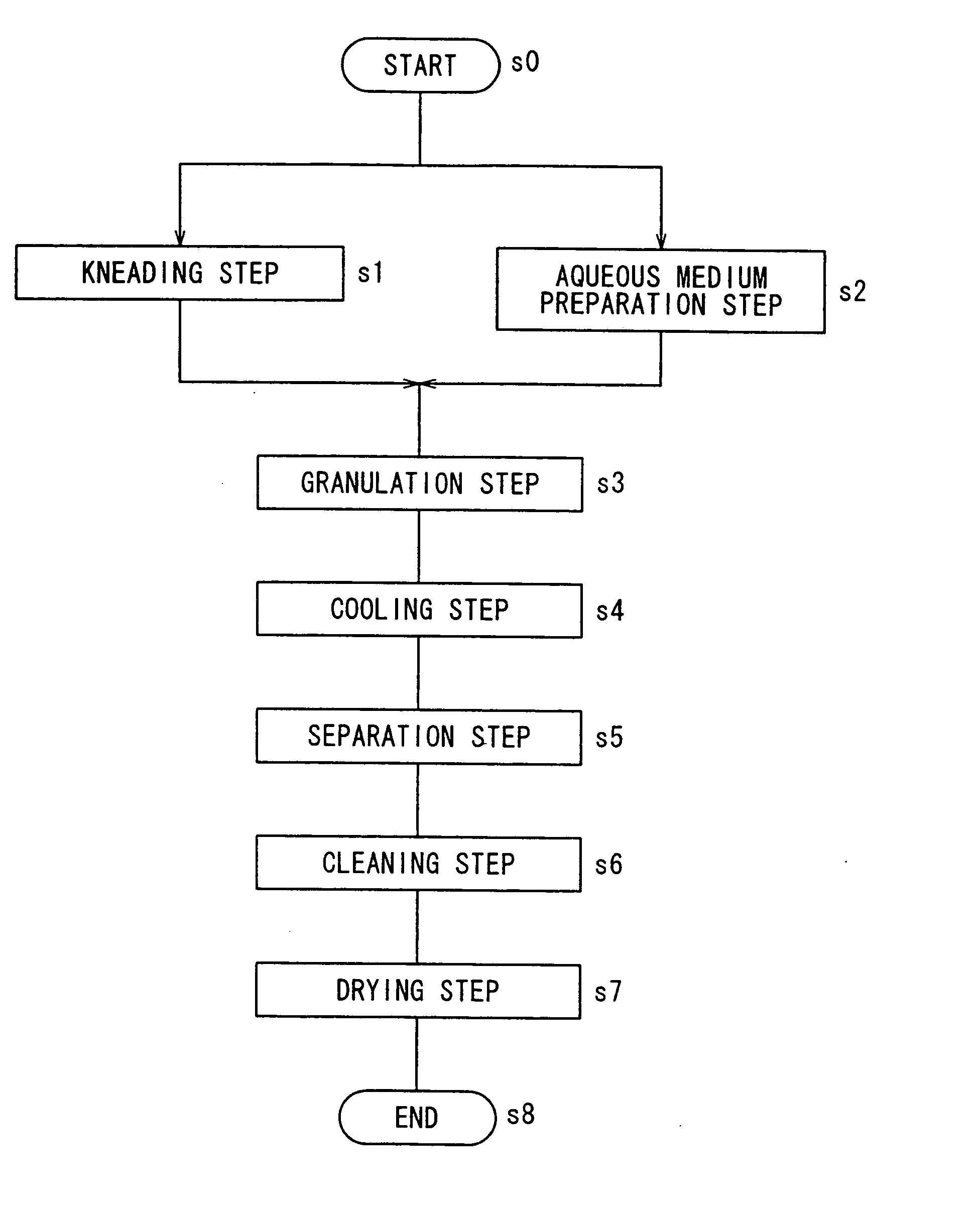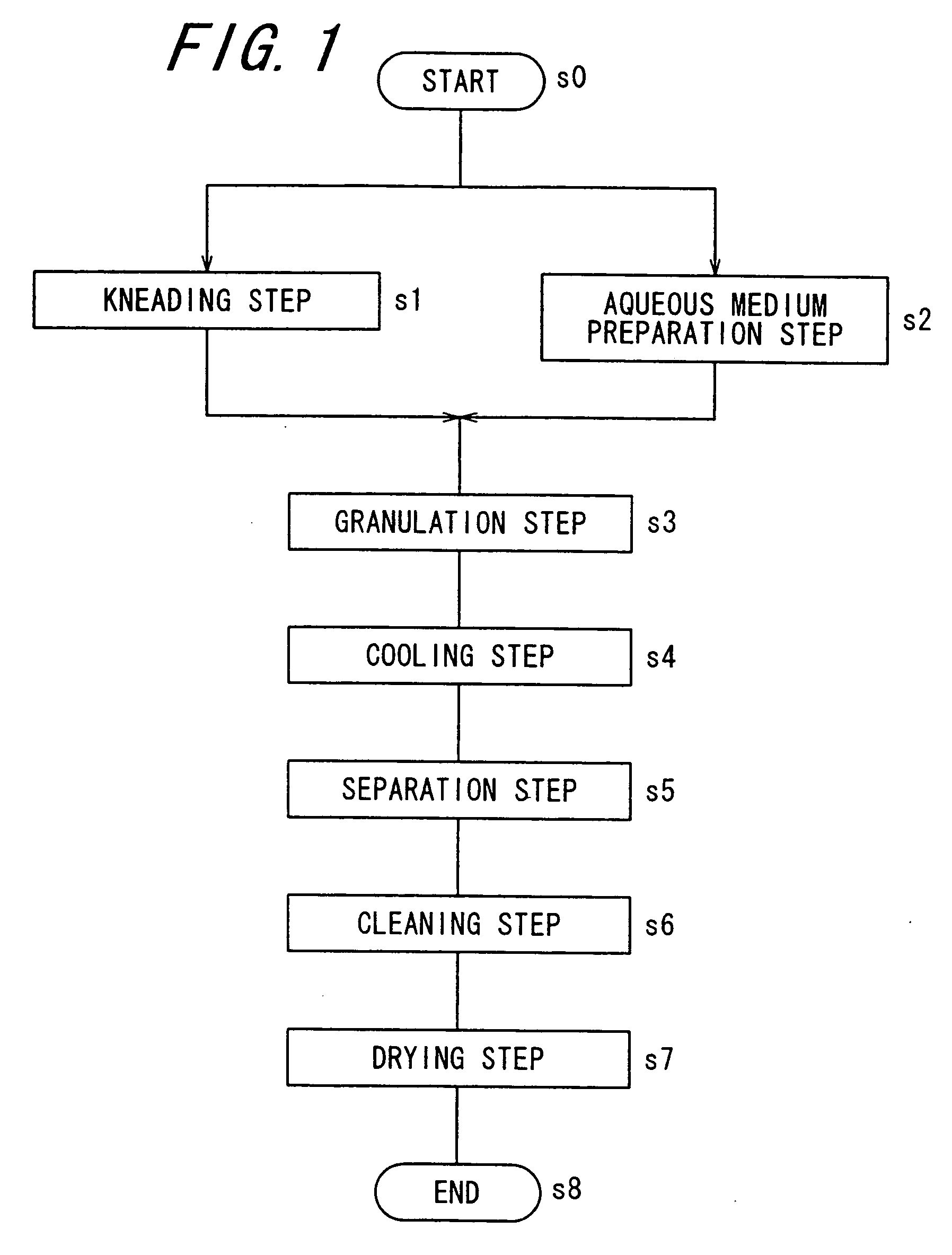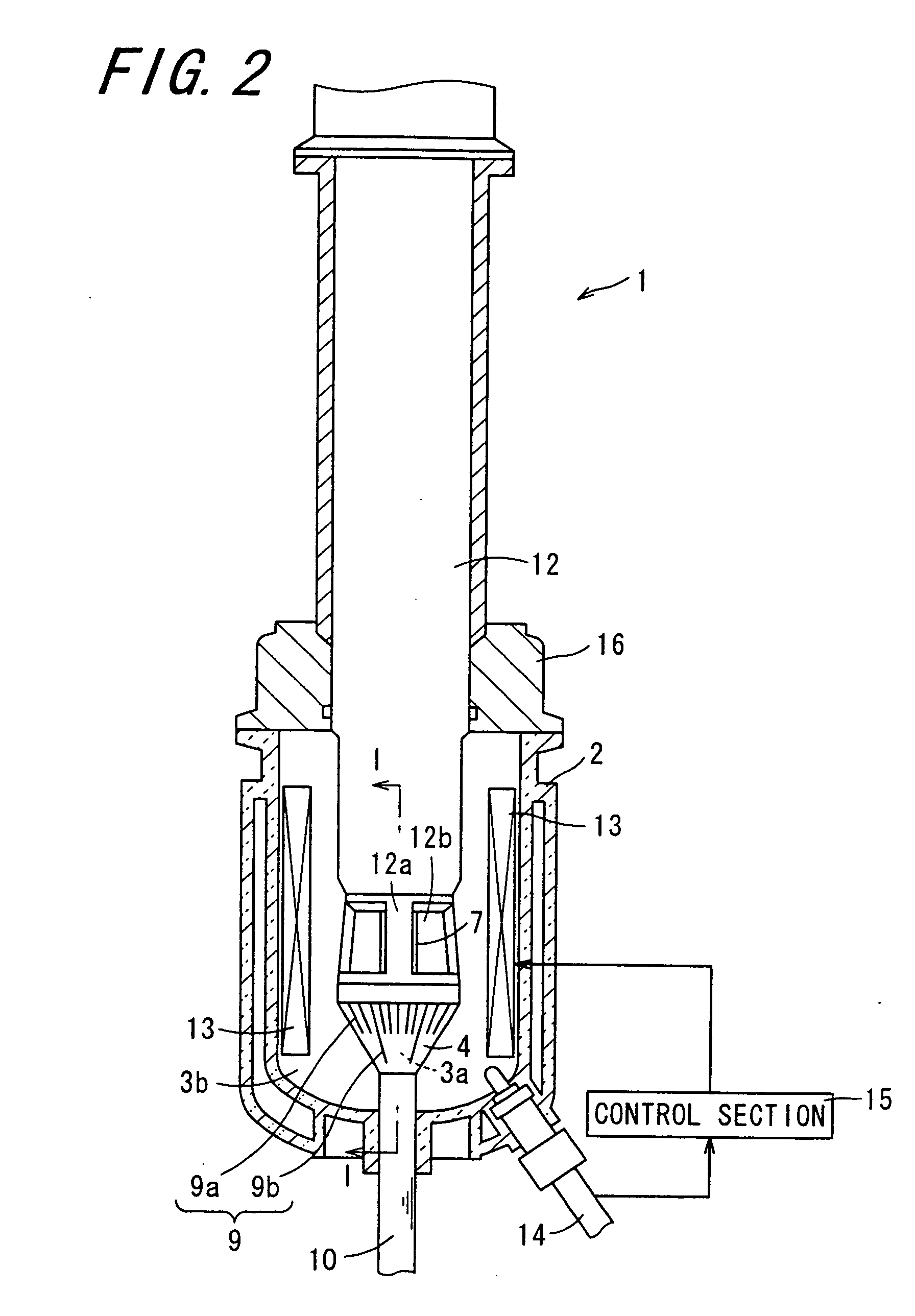Toner manufacturing method
a manufacturing method and technology for toners, applied in the field of toner manufacturing methods, can solve the problems of poor powder fluidity, irregular particle shape, and significant deterioration of powder fluidity, and achieve the effect of uneven charging capability, lack of uniformity in characteristics, and efficient granulation of resin kneaded products
- Summary
- Abstract
- Description
- Claims
- Application Information
AI Technical Summary
Benefits of technology
Problems solved by technology
Method used
Image
Examples
example 1
[0168] [Kneading Step]
[0169] There were prepared: 890 parts of polyester resin A (having glass transition temperature of 56.7° C., peak top molecular weight of 12500, Mw / Mn of 2.5, acid value of 16, softening temperature of 102° C., and THF-insoluble component of 0%) for use as a binder resin; 50 parts of C.I. pigment blue 15:3 Blue No. 26 (trade name) manufactured by Dainichi seika Color & Chemicals Mfg. Co., Ltd. for use as a colorant; 10 parts of a charge controlling agent: BONTRON E 84 (trade name) manufactured by Orient Chemical Industries, Ltd.; and 50 parts of wax: TOWAX 161 (trade name) manufactured by To a Kasei Co., Ltd. for use as a release agent. These constituent components have been mixed and dispersed for 3 minutes by using a mixer: Henschel Mixer (trade name) manufactured by Mitsui Mining Co., Ltd. to obtain a raw material admixture. Next, the obtained raw material admixture was melt-kneaded by using a twin-screw extruder: PCM-30 (trade name) manufactured by Ikegai C...
example 2
[0178] As Example 2, a toner having a volumetric average particle diameter (D50) of 6.1 μm and a variable coefficient (CV) of 26 was formed by carrying out the same operations as those in Example 1 except that, in the granulation step, after the granulation temperature has been reached, the number of rotation of the rotor 5 was adjusted to 12000 rpm (12000 rotations / min.) and the number of rotation of the screen 4 was adjusted to 10800 rpm (10800 rotations / min.) (the ratio of the rpm of the screen 4 to the rpm of the rotor 5 stood at 0.90).
example 3
[0179] As Example 3, a toner having a volumetric average particle diameter (D50) of 4.3 μm and a variable coefficient (CV) of 22 was formed by carrying out the same operations as those in Example 1 except that, in the granulation step, after the granulation temperature has been reached, the number of rotation of the rotor 5 was adjusted to 20000 rpm (20000 rotations / min.) and the number of rotation of the screen 4 was adjusted to 18000 rpm (18000 rotations / min.) (the ratio of the rpm of the screen 4 to the rpm of the rotor 5 is 0.90).
PUM
 Login to View More
Login to View More Abstract
Description
Claims
Application Information
 Login to View More
Login to View More - R&D
- Intellectual Property
- Life Sciences
- Materials
- Tech Scout
- Unparalleled Data Quality
- Higher Quality Content
- 60% Fewer Hallucinations
Browse by: Latest US Patents, China's latest patents, Technical Efficacy Thesaurus, Application Domain, Technology Topic, Popular Technical Reports.
© 2025 PatSnap. All rights reserved.Legal|Privacy policy|Modern Slavery Act Transparency Statement|Sitemap|About US| Contact US: help@patsnap.com



